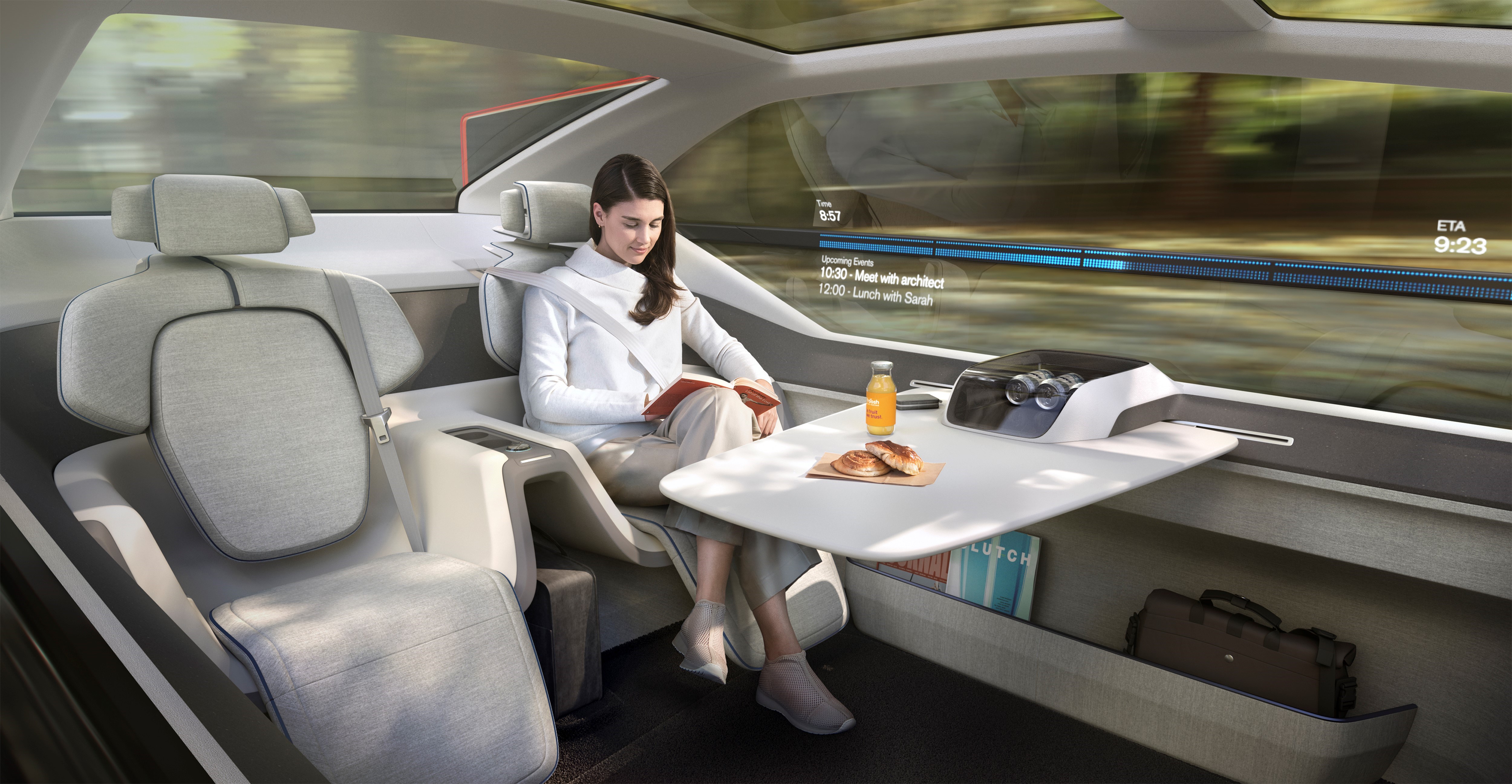Volvo unveiled Wednesday its vision for future travel. And it’s an electric autonomous vehicle without a steering wheel or other traditional means of control that would serve multiple purposes for its passengers, and ultimately disrupt the domestic air travel industry.
The 360c concept is just a concept. Meaning, the vehicle shown Wednesday in Sweden won’t be going into production anytime soon, if at all. But as most concepts aim to do, the 360c gives us insight into Volvo’s thinking and hints at where the company is headed.
In short, the 360c concept is a conversation piece. And Volvo wants to talk about how autonomous vehicles, like this one, will be used and how the technology might change societies.
The 360c concept shows four potential uses of autonomous driving vehicles: as a sleeping environment, mobile office, living room and entertainment space.

Volvo 360c interior
“The business will change in the coming years and Volvo should lead that change of our industry,” said Volvo Cars president and CEO Håkan Samuelsson. “Autonomous drive will allow us to take the big next step in safety but also open up exciting new business models and allow consumers to spend time in the car doing what they want to do.”
The concept is also supposed to represent what Volvo describes as a “potentially lucrative competitor to short-haul air travel. Volvo contends that shorter routes, where the distance between origin and destination is around 300 kilometers (186 miles), “are prime candidates for disruption by an alternative mode of travel.”

Volvo 360c interior
Volvo doesn’t say how fleets of 360c vehicles — presuming they were ever built — might affect trains, a present-day mode of travel that often shuttles people short distances between cities.
The company also introduced a proposal for a global standard in how autonomous vehicles can safely communicate with all other road users. Engineers created a system for the 360c made of up external sounds, colors, visuals and movements to communicate the vehicle’s intentions to other road users, a critical feature for self-driving cars when they eventually are deployed en masse on pubic roads.
